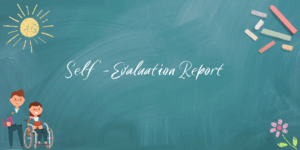
In Scottish schools, a self-evaluation report is a document where a school evaluates its own performance, identifies strengths and weaknesses, and outlines plans for improvement. This ongoing process uses evidence to guide the school’s development and is a core part of the Scottish education system. Schools use self-evaluation to answer questions like “How good is our school?” and “What do we need to do to improve?” and it’s crucial for Education Scotland inspections.
Key Aspects of Self-Evaluation in Scottish Schools
- Evidence-Based:
Schools gather evidence from various sources, such as parent and pupil questionnaires, professional reviews, and improvement plans, to support their self-evaluation.
- Focus on Improvement:
The primary goal is to drive ongoing improvement by understanding current performance and setting clear targets for the future.
- Accountability and Transparency:
Self-evaluation helps schools demonstrate their effectiveness and transparency to inspectors and partners.
- Central to Inspections:
Headteachers provide a self-evaluation summary form before an inspection, which the inspection team uses to understand the school’s self-evaluation process and its effectiveness.
- Not a Fixed Format:
There isn’t a single, prescribed format for a self-evaluation report; schools can tailor it to their specific needs and contexts.
- Includes Key Questions:
The process is guided by fundamental questions such as:
-
- How good is our school and how do we know?
-
- What are our strengths and weaknesses?
-
- What do we need to do to improve?
-
- How do we meet the needs of our stakeholders?

